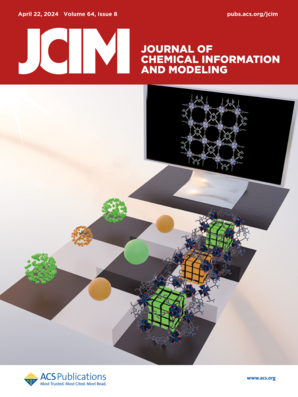pLM4CPPs: Protein Language Model-Based Predictor for Cell Penetrating Peptides.
IF 5.6
2区 化学
Q1 CHEMISTRY, MEDICINAL
引用次数: 0
Abstract
Cell-penetrating peptides (CPPs) are short peptides capable of penetrating cell membranes, making them valuable for drug delivery and intracellular targeting. Accurate prediction of CPPs can streamline experimental validation in the lab. This study aims to assess pretrained protein language models (pLMs) for their effectiveness in representing CPPs and develop a reliable model for CPP classification. We evaluated peptide embeddings generated from BEPLER, CPCProt, SeqVec, various ESM variants (ESM, ESM-2 with expanded feature set, ESM-1b, and ESM-1v), ProtT5-XL UniRef50, ProtT5-XL BFD, and ProtBERT. We developed pLM4CCPs, a novel deep learning architecture using convolutional neural networks (CNNs) as the classifier for binary classification of CPPs. pLM4CCPs demonstrated superior performance over existing state-of-the-art CPP prediction models, achieving improvements in accuracy (ACC) by 4.9-5.5%, Matthews correlation coefficient (MCC) by 9.3-10.2%, and sensitivity (Sn) by 14.1-19.6%. Among all the tested models, ESM-1280 and ProtT5-XL BFD demonstrated the highest overall performance on the kelm data set. ESM-1280 achieved an ACC of 0.896, an MCC of 0.796, a Sn of 0.844, and a specificity (Sp) of 0.978. ProtT5-XL BFD exhibited superior performance with an ACC of 0.901, an MCC of 0.802, an Sn of 0.885, and an Sp of 0.917. pLM4CCPs combine predictions from multiple models to provide a consensus on whether a given peptide sequence is classified as a CPP or non-CPP. This approach will enhance prediction reliability by leveraging the strengths of each individual model. A user-friendly web server for bioactivity predictions, along with data sets, is available at https://ry2acnp6ep.us-east-1.awsapprunner.com. The source code and protocol for adapting pLM4CPPs can be accessed on GitHub at https://github.com/drkumarnandan/pLM4CPPs. This platform aims to advance CPP prediction and peptide functionality modeling, aiding researchers in exploring peptide functionality effectively.求助全文
约1分钟内获得全文
求助全文
来源期刊
CiteScore
9.80
自引率
10.70%
发文量
529
审稿时长
1.4 months
期刊介绍:
The Journal of Chemical Information and Modeling publishes papers reporting new methodology and/or important applications in the fields of chemical informatics and molecular modeling. Specific topics include the representation and computer-based searching of chemical databases, molecular modeling, computer-aided molecular design of new materials, catalysts, or ligands, development of new computational methods or efficient algorithms for chemical software, and biopharmaceutical chemistry including analyses of biological activity and other issues related to drug discovery.
Astute chemists, computer scientists, and information specialists look to this monthly’s insightful research studies, programming innovations, and software reviews to keep current with advances in this integral, multidisciplinary field.
As a subscriber you’ll stay abreast of database search systems, use of graph theory in chemical problems, substructure search systems, pattern recognition and clustering, analysis of chemical and physical data, molecular modeling, graphics and natural language interfaces, bibliometric and citation analysis, and synthesis design and reactions databases.

 求助内容:
求助内容: 应助结果提醒方式:
应助结果提醒方式:


